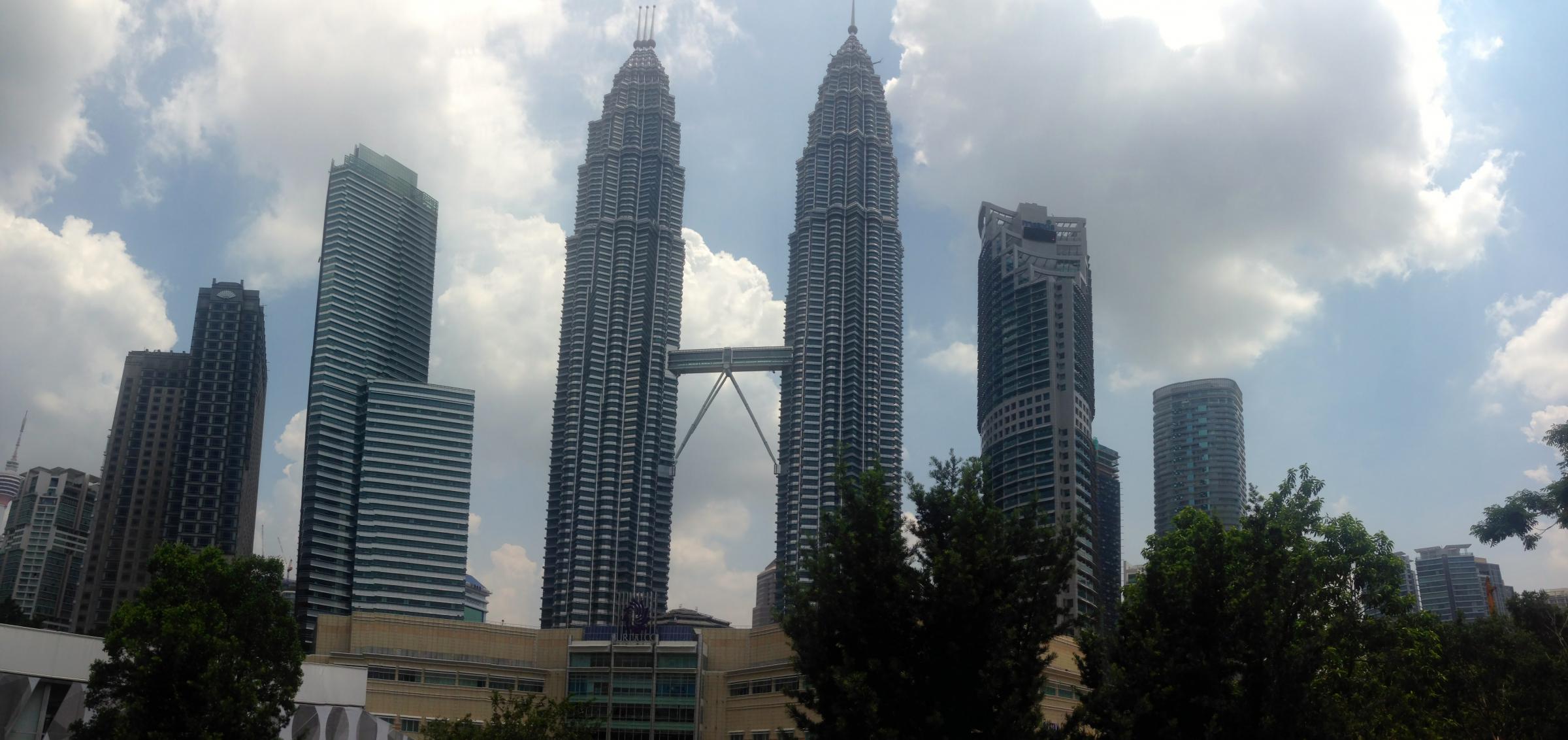Southeast Asia is undergoing rapid industrialization and growth. With the increase in growth has been an increase in energy use and environmental impact. As the infrastructure and cities develop, there is a growing need for energy reduction strategies and environmental protection. Asia is estimated to be the fastest growing region of the world at 7% a year through 2020.
The top 6 construction markets in Southeast Asia in 2012 combined for $285 Billion in construction spending. This is nearly 40% of the US market ($750 Billion), and dwarfed by the Chinese market ($1.25 Trillion). The top countries include Indonesia ($184B), Thailand ($30B), Singapore ($20B), Vietnam ($19B), Malaysia ($18B), and the Philippines ($13B). With projected growth rates exceeding the US, the growing building markets in Asia are an opportunity for wide green building adoption. (1)
Green Building Program Adoption
The green building industry and energy efficiency codes have lagged in Southeast Asia. Building energy codes have only recently been adopted or enforced, for example in Singapore 1999, Malaysia 2001, Thailand 2001-2005, and the Philippines 2005 (Asia Business Council 2006). (2)
Custom green building programs are being deployed, and are in their infancy. Singapore developed GreenMark in 2005, Malaysia has developed the Green Building Index in 2009, and Indonesia has developed the Greenship program in 2009. The rating systems in Singapore, Malaysia, and Indonesia are based on other rating systems such as the LEED Rating System in the US.
Building requirements are consistent throughout the world to provide clean indoor air environments, lighting, heating, cooling, ventilation, water, and waste removal. With so many similar building requirements, solutions have shown to be transferable and scalable. It is no surprise the categories of each program promote site selection, energy efficiency, water efficiency, material use, and indoor environmental quality.
Comparisons to LEED
The leader in green building programs is the LEED program administered by the United States Green Building Council. It is important to note the similarities between LEED and the newly developed programs in Southeast Asia. Comparing programs such as the Greenmark program in Singapore with LEED shows the main sections of: Energy Efficiency, Water Efficiency, Environmental Protection, Indoor Environmental quality, and Other green features. This is comparable to the LEED sections of: Energy and Atmosphere, Water Efficiency, Sustainable sites, Indoor Environmental Quality, Materials and Resources, and Innovation and Design Process.

For a detailed description of the individual credits in each program see the study here (4). It is important that new programs be developed in other parts of the world similar to the need for regional specific credits in the existing LEED system. Different parts of the country and world benefit from different measures by different amounts. The new programs incentivize the most important green features to the region the program has been developed.
Green Building Market Accelerators
There are many drivers making the Southeast Asia market prime for green building development. The following are some reasons the markets are moving toward sustainable construction practices. (3)
- Energy Security - Potential energy shortages and price spikes in energy costs have heightened the need for energy efficiency as a viable focus in the building sector.
- Air Pollution/Environmental Damage – Pollution of developing cities is driven by increased energy use and transportation infrastructure. Green building programs develop ways to measure reductions in pollution contribution.
- Climate Change/Carbon Reductions - With carbon emissions reduction targets being set on federal levels across the world, energy efficiency is a proven strategy to reduce dependence on fossil fuels. Any carbon reduction goals have financial support for building efficiency upgrades.
- Water Shortages - Just recently, parts of Malaysia have been undergoing mandatory water rationing for months due to water shortages. There are major inefficiencies in water use systems in agriculture, industry, and building consumption. Building water use efficiencies reduce the impact on local water infrastructure.
Summary
Southeast Asia is a rapidly growing construction market with a green building industry less than 10 years old. Governments and developers are rapidly recognizing the benefits of green building construction. With proven strategies from across the world, the opportunity exists to transform the building industry rapidly.
As more markets focus on energy efficiency and green building, there is incentive in the green building industry for continued innovation and exploration. There is a shortage of qualified professionals due to the rapid introduction of green building and energy efficiency programs in the region. Investments are being made in professional development, training, and awareness. Expect innovative building techniques to develop in this area of the world over the next decade.
 Skyline of Kuala Lumpur, Malaysia an example of the rapid modernization of cities in Southeast Asia leading to an increased focus on green buildings.
Skyline of Kuala Lumpur, Malaysia an example of the rapid modernization of cities in Southeast Asia leading to an increased focus on green buildings.
(1) AECOM “Asia Construction Outlook 2013”
(2) Diener Real Estate “Emerging Asia’s accelerating activity in green construction”
(3) Dr. Faridah Shafii “Status of Sustainable Building in Southeast Asia”
(4) Alireza Ahankoob “A Comprehensive Comparison between LEED and BCA Green Mark as Green Building Assessment Tools” The International Journal Of Engineering And Science (IJES)
Our Mission
NESEA advances sustainability practices in the built environment by cultivating a cross-disciplinary community where practitioners are encouraged to share, collaborate and learn.
Recent Posts
administratorBE Boston 21 RegistrantsBE Boston 22 RegistrantsBE Boston 23 RegistrantsBE Boston 24 RegistrantsBE NYC 19 RegistrantsBE NYC 20 RegistrantsBE NYC 21 RegistrantsBE NYC 22 RegistrantsBE NYC 23 RegistrantsBottom Lines - FacilitatorBottom Lines - Steering CommitteeBuildingEnergy 16 Full ConferenceBusiness Membercontent admincontent editorMember
administratorBE Boston 21 RegistrantsBE Boston 22 RegistrantsBE Boston 23 RegistrantsBE Boston 24 RegistrantsBE NYC 19 RegistrantsBE NYC 20 RegistrantsBE NYC 21 RegistrantsBE NYC 22 RegistrantsBE NYC 23 RegistrantsBottom Lines - FacilitatorBottom Lines - Steering CommitteeBuildingEnergy 16 Full ConferenceBusiness Membercontent admincontent editorMember
BE Boston 20 RegistrantsBE Boston 21 RegistrantsBE Boston 23 RegistrantsBE NYC 19 RegistrantsBE NYC 20 RegistrantsBE NYC 21 RegistrantsBE NYC 22 RegistrantsBE NYC 23 RegistrantsBoard MemberBusiness MemberMember





Add comment